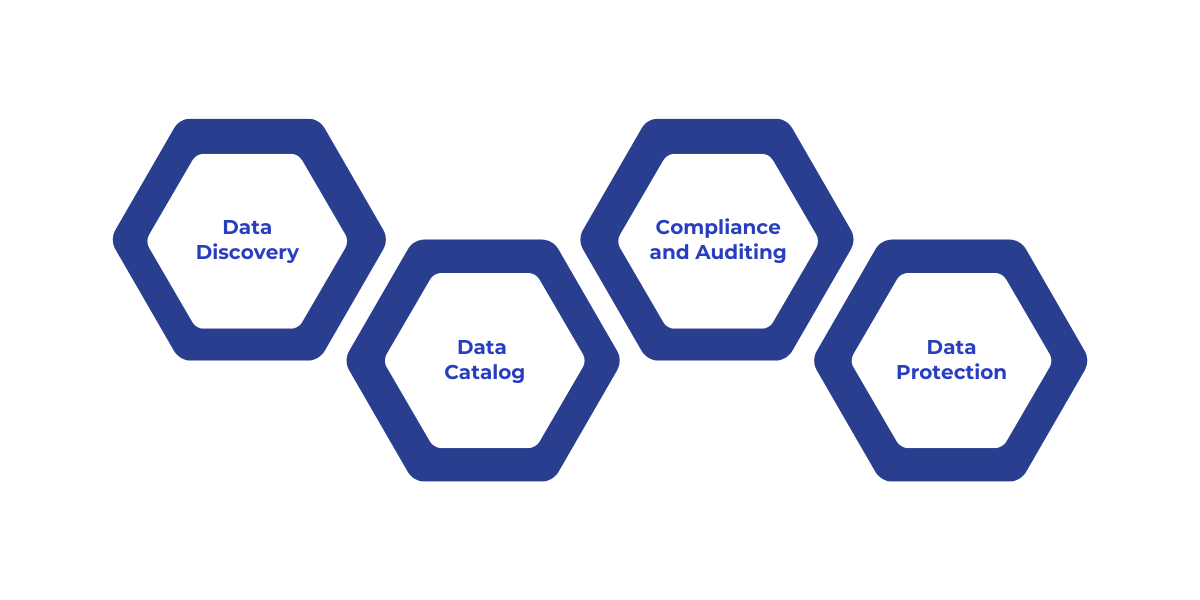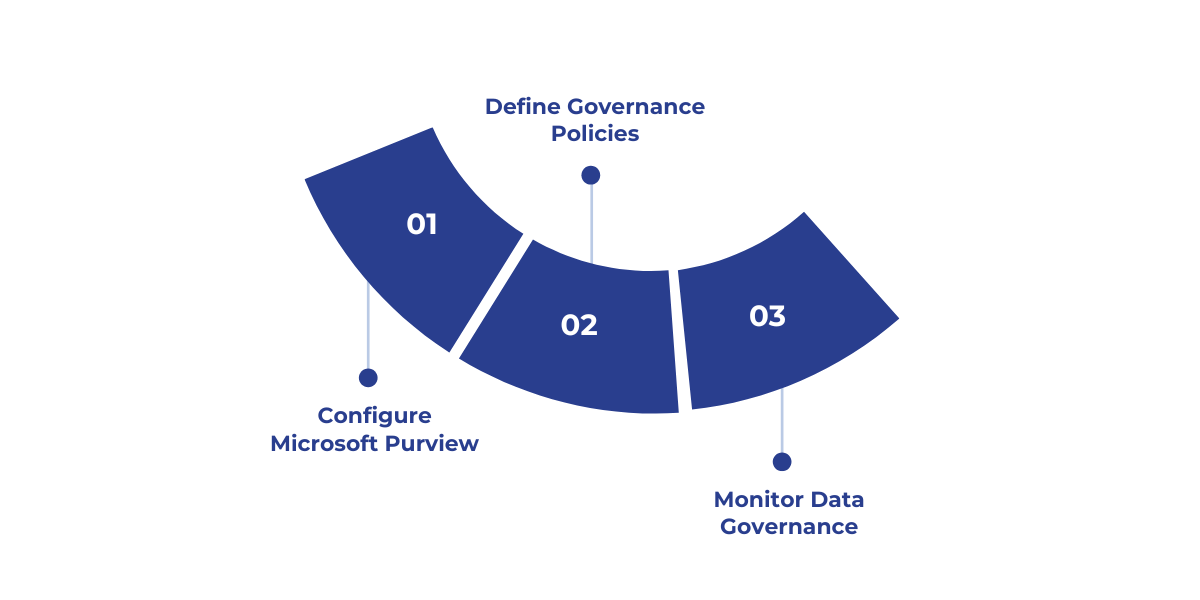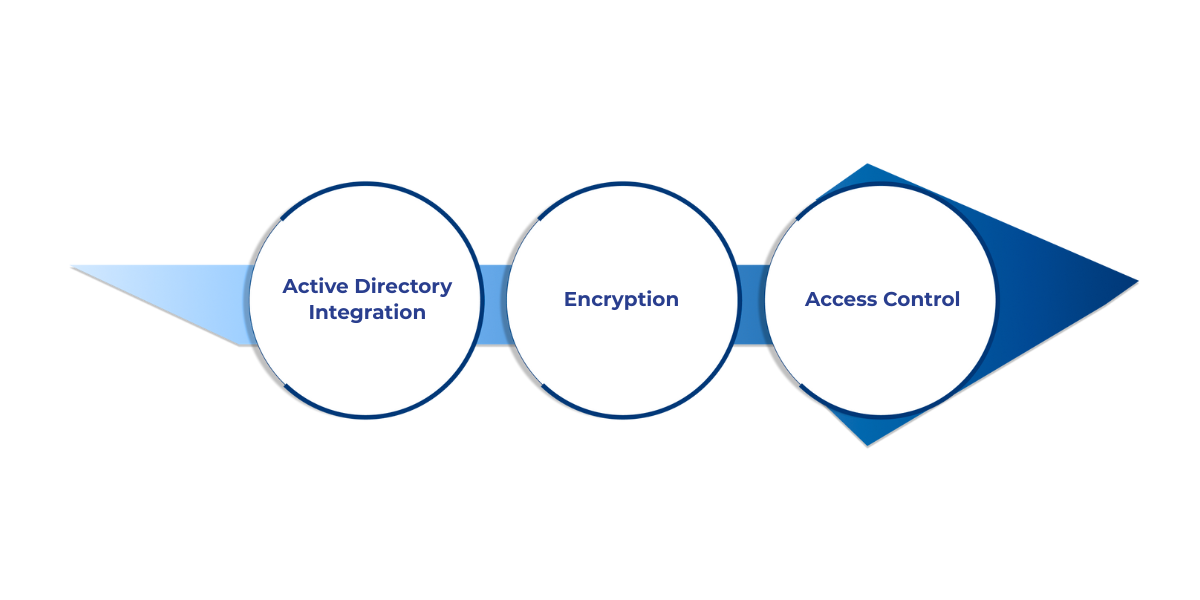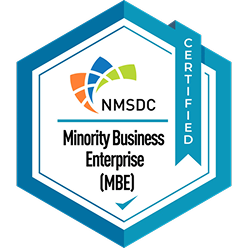
.png)
To address these challenges, Microsoft Purview, integrated with Microsoft Fabric, provides a comprehensive solution for data governance.
This blog will explore the key features of Purview, its integration with Microsoft Fabric, and how it helps businesses streamline data management, security, and compliance.

Microsoft Purview offers a range of features that help businesses manage and govern data across cloud and on-premise environments.
Also Read: Simple Guide to Data Infrastructure and Analytics
Now that we understand the core features, let’s dive into how you can get started with data governance in Microsoft Fabric.

Getting started with data governance in Microsoft Fabric involves configuring Microsoft Purview, defining governance policies, and continuously monitoring for compliance and security. Below is a breakdown of the steps:
To begin implementing data governance, you first need to configure Microsoft Purview within Microsoft Fabric.
Once Microsoft Purview is set up, it’s crucial to define clear governance policies for managing access, security, and compliance.
Ongoing monitoring is essential to ensure that governance policies are being followed and to address any issues promptly.
Also Read: Top Data Governance Tools to Learn About
Once you're set up, it’s essential to understand how the Microsoft Purview Hub integrates all your governance tools into a unified interface for seamless management.
The Microsoft Purview Hub is a unified interface within Microsoft Fabric that integrates multiple Purview services, providing users with centralized access to essential data governance tools.
The Purview Hub consolidates all data governance functions, including data discovery, policy enforcement, and auditing, in one accessible interface. This centralized approach simplifies the management of data assets, reducing complexity and improving efficiency.
With an intuitive interface, users can easily navigate key governance features, including data cataloging, lineage tracking, and security management.
This streamlined access ensures that data management and security practices are consistently enforced across the organization.
Also Read: Understanding the OneLake Data Hub in Microsoft Fabric
With data governance in place, let's discuss how integrating Microsoft Purview with Azure enhances security and helps prevent data loss.

Preventing data loss and securing sensitive information is a core part of any data governance strategy. Microsoft Purview, when integrated with Azure, provides advanced security features to protect data across the entire lifecycle.
Azure AD centralizes authentication and authorization across your organization. It ensures that only authorized users and applications can access specific data, enhancing control and reducing security risks.
Azure offers powerful encryption capabilities to protect data both at rest and in transit. This ensures that sensitive information remains protected throughout its lifecycle.
Implementing access control policies helps prevent unauthorized data exposure and ensures that only authorized users can access sensitive information.
To further solidify your governance strategy, data lineage and metadata management are critical tools for tracking and managing your data effectively.
Data lineage and metadata management are fundamental components of an effective data governance strategy. By tracking the flow of data through various systems and managing metadata, organizations gain visibility into how data is used, transformed, and consumed.
Microsoft Purview’s data lineage capabilities provide a clear visualization of data’s journey across the organization. This helps you understand how data is processed, transformed, and how it interacts with various systems.
Managing metadata ensures consistency across your data estate and allows for effective discovery, classification, and auditing of data.
Mastering data governance through effective data lineage, metadata management, and robust security practices is essential for any organization looking to secure its data and ensure compliance.
Microsoft Purview’s features, such as data lineage tracking and sensitivity labels, help businesses not only to safeguard sensitive data but also maintain a high level of trust in the data they use.
At WaferWire, we specialize in helping businesses implement comprehensive data governance frameworks with Microsoft Purview and Microsoft Fabric. Let us help you secure, manage, and optimize your data environment.
Contact us today to discover how we can optimize your data governance strategy and enhance your data security practices.
Q: How does Microsoft Purview help in maintaining data compliance?
A: Microsoft Purview assists in data compliance by providing detailed auditing capabilities and ensuring that all data is classified and stored according to regulatory requirements. It automatically tracks data usage and enforces compliance policies for different data types, ensuring continuous adherence to standards like GDPR and HIPAA.
Q: Can Microsoft Purview handle both cloud and on-premises data sources?
A: Yes, Microsoft Purview can integrate and govern data across both cloud and on-premises environments. It supports a wide variety of data sources, including Azure Data Lake, SQL databases, and on-premises systems, ensuring a unified governance strategy across your entire data estate.
Q: What is the role of sensitivity labels in Microsoft Purview?
A: Sensitivity labels are used to classify data based on its sensitivity level, such as confidential, restricted, or public. These labels help ensure that appropriate security measures—such as encryption or restricted access—are applied to sensitive data, enhancing data protection.
Q: How does data lineage tracking in Purview improve data governance?
A: Data lineage tracking provides a visual representation of how data flows across systems, showing where it originates, how it's transformed, and where it’s used. This transparency is essential for troubleshooting, compliance audits, and ensuring data quality by identifying bottlenecks or errors in data processing workflows.
Q: Can businesses apply data retention policies using Microsoft Purview?
A: Yes, businesses can set data retention policies in Microsoft Purview to manage how long data should be kept and when it should be archived or deleted. This ensures compliance with regulatory data retention requirements and helps organizations avoid the risks associated with storing unnecessary or outdated data.

